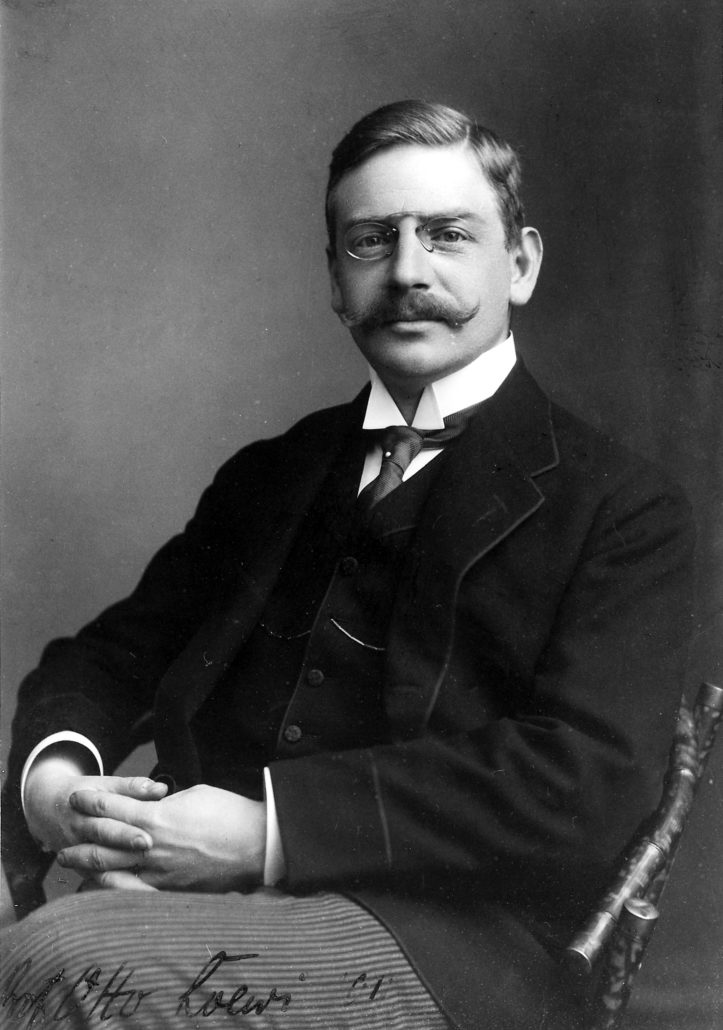The Vagus Nerve: The Key To Unlock the Gut/Brain/and Body Connection
This Wandering Nerve Could Be The Key To Whole Body Balance
The Vagus Nerve, also known as the 10th cranial nerve or the pneumogastric nerve, links key bodily systems in ways that we are just beginning to understand and appreciate. It controls crucial activities like your heart rate, blood pressure, stress response, digestive motility, and so much more. The vagus nerve connects the parasympathetic nervous system, sending signals to every organ of the body. Signals traveling up and down this nerve can make you feel calm and conversely activate stress hormones throughout your body. There are many things that this “wanderer” does (the name Vagus comes from the word vagrant, as this nerve wanders like a vagabond amongst your organs).
From the brain all the way down to branches in your groin, the vagus nerve meanders and encircles every area of your torso. It is the longest nerve of the autonomic nervous system, and while known for a few hundred years to anatomists, its connection to heart rate was only discovered in 1921 by Otto Loewi. His experiments slowed the heart rates of frogs by stimulating their vagus nerves. Such an effect had never been seen before—the heart was thought to operate automatically based on exertion needs of the body, not the signals of a nerve that doesn’t even touch our muscles. This opened up the idea that we might be able to have some influence over this powerful conductor of deep body signals.
German-born Otto Loewi was a pharmacologist and psychobiologist in the early nineteenth century responsible for discovering the role of acetycholine as a neurotransmitter. His research earned him the Nobel Prize in Physiology or Medicine in 1936.

Since Loewi’s discovery, so much more has been learned about the connection between the brain, the vagus nerve, and even the digestive system. In this article, we’ll touch on some of those specifics first and then discuss ways to influence your own vagus nerve for better health and whole-body wellness.
All About The Vagus Nerve: From Heart And Breath To Inflammation And Calm
Now that you know the history and basic anatomy of the vagus nerve, let’s talk about what this amazing system actually does on a daily basis. Beyond regulating your heart rate and keeping constant tabs on your breathing, the vagus nerve is THE way that your gut talks to your brain. Nearly 90% of the fibers in the entire vagus nerve transmit signals TO the brain from the rest of the body. That tells you something about this nerve’s true function: to keep a handle on what your body is experiencing and to tell the brain all about it. Some researchers have even found evidence that microbes that thrive in our gut also exchange messages with the brain by hacking into the vagus nerve system and traveling up it like a highway.
Just 10-15% of the fibers are actually used to transmit signals from the brain out to your body. When those are used, it is to slow your heart rate or to give your stomach a quick tingle (whether from anxiety or love or even indigestion), or even to direct the release of certain hormones.
How The Vagus Nerve Plays Into Your Internal Environment
Here are just a few ways your vagus influences every bit of your constitution.
- Fighting Inflammation: when the presence of inflammatory molecules is detected, such as cytokines or tumor necrosis factor, the vagus nerve sends a signal to the brain to enable the release of anti-inflammatory neurotransmitters.
- Fainting: if you feel weak in the knees at the sight of blood, that’s your vagus nerve triggering a response called vagal syncope. It’s a short term overwhelm of the vagus nerve that restricts blood to the brain and you’ll soon get that “tunnel vision” and possibly pass out. Or just sit down and breathe until it subsides.
- Remember This: stimulation of the vagus nerve can help to solidify long term memories, by increasing norepinephrine into the amygdala (the center for consolidation of memory).
- Breath & Beat: both your heart and your lungs respond to the neurotransmitter acetylcholine, but the key discovery by Dr. Loewi was that the release of acetylcholine by the parasympathetic nervous system (through activation of the vagus nerve) slows the heart rate. Deliberately slowing the breath also sends a vagus signal to slow the heart via acetylcholine.
- Gut Feelings: all of those things that we call “feeling with the gut” or “gut instinct” are truly the vagus nerve talking to us through the tight brain/belly connection. Butterflies in your stomach from that special person? That’s the vagus nerve getting all twitterpated. Stomach ache from a social event? Same thing, but just working against you and your comfort.
Many of the things that go wrong in our perception are coming from the sympathetic nervous system (the “fight or flight” part of the nervous system). These include stress, inflammation, racing thoughts, gut sensitivities, and social anxiety. We all can experience them—sometimes on the daily, and sometimes what seems like all the time—whether we are going through a personal crisis or there are environmental influences affecting us.

But with what we know about this superhighway called the vagus nerve, the great news is that you DO have a lot of control. Remember the vagus is attuned to 90% receiving information. So let’s learn the techniques to give your vagus new and calming signals so it can respond to you with better balance.
Activating Your Vagus Nerve: Breathe, Breathe, and Breathe
Now that you know you have a bit of control and influence over how your oh-so-important vagus nerve responds to bodily sensations and even external situations, let’s dive right into how you can work with your body to calm your system and bring your fight-or-flight response down when it is not needed.
The most accessible and easiest way to activate your vagus nerve is through breathwork, both traditional breathing techniques as well as one VERY enjoyable practice. Let’s look at three different ways to use your breath to directly tap into the core of your body’s calming capabilities.
First, the “6s”: six breaths per minute, evenly and deeply. By far the most simple kind of breathing to practice—all you need is a timer to count seconds. Breathe in for 5 seconds and out for 5 seconds, for a total of at least a minute, but several are even better. This gives you 6 breaths per minute and will send strong signals to your body to slow down your heart and calm any anxieties or stress hormones.
Second, the 4-7-8 Breathing method is called “the relaxing breath”. This incredibly simple technique was created by Dr. Andrew Weil to help with acute anxiety and moments of stress or frustration. Slow breathing can change your life as we are beginning to see with our investigation of the vagus nerve.
Here’s how to do 4-7-8 breathing:
- Empty your lungs of air
- Breathe in steadily for 4 long seconds
- Hold your breath while counting out 7 more seconds
- Purse your lips and exhale through the mouth with pressure for 8 full seconds. Make a ‘whoosh’ sound and really use your diaphragm
- Repeat for a total of 4 cycles
Finally, let’s get loud: singing and chanting. That’s right, you can stimulate your vagus nerve and increase your heart rate variability by getting a good lung-buster song session on. And all kinds of singing are great, as long as you get into it. It could be your favorite song at the top of your lungs in the shower or car, or singing in chorus in your church, or chanting rhythmically with a structured mantra or a humming practice.
For those less likely to belt, simply listening to music between the 60-90 bpm range can also have a soothing effect. One song, in particular, has been shown to reduce your stress level by upwards of 65%!
Activating Your Vagus Nerve: Let’s Chill And Maybe Get Uncomfortable
Ready to level up? Breathing is simple, effective, and easy. But there are many more ways to give your vagus nerve a nudge. Some of them require a bit more effort, and a few will truly make you uncomfortable. NONE are risky. Discomfort does not equal danger, here. Let’s dive right into it:
Meditation. This practice is in the “advanced” section because it does take time to become a habit, and it takes a bit more time and investment than simply breathing for a minute or two when you are doing other things. But the evidence for a strong meditative practice is huge and much of it points to benefits for vagal tone and overall health.
Cold exposure. Fully cold showers or even a dip in a frozen lake or a bathtub full of ice water is one way to get this sudden jolt to your vagus nerve, but you can also stimulate a similar effect by plunging your face into very cold water for as long as you can comfortably hold your breath. (This also requires a lot less water than the cold shower or bathtub!)
In addition to the external therapeutic ways (breath, habits, practices) to support and nudge our vagus nerves into better health, there is one exciting frontier worth considering: holographic information therapy or HIT. Sometimes known as Quantum Neurology, this is an emergent field that combines the hands-on approach of chiropractic work with visualizations and energy work to bring the patient’s nervous system back into proper flow and balance. Often this is used as an intervention to reduce pain or immobility, rather than a general wellness practice. This practice is a common therapy offered at NYCIM, and proven to be a beneficial tool.

The New York Center of Innovative Medicine offers a wide variety of therapies, including holographic information therapy, that uses a combination of light and energy work to activate the vagus nerve.
While the field is still growing, there are great resources available on these techniques on the Quantum Neurology YouTube channel, and some descriptions of the hands-on modalities on the Painmatters website. Dig deep, talk to your healthcare provider, and here’s to your health!
You Have the Control to Calm Your Body
The best thing to take away from this vagus overview is that your body has nearly all the tools it already needs for amazing health. All that you require is curiosity and perhaps a new habit or two.
You now know how to modulate your breath, get some good songs out, and even get a little chilly to boost your body’s own ability to cool down from stressors and irritants. And of course, that is so important when facing every day or once-in-a-lifetime kind of stress, something we could all use about now.
The post The Vagus Nerve: The Key To Unlock the Gut/Brain/and Body Connection appeared first on Innovative Medicine.
See how we can help you restore complete health of body, mind & spirit.
Lorem ipsum dolor sit amet, consectetur adipiscing elit, sed do eiusmod tempor incididunt ut labore et